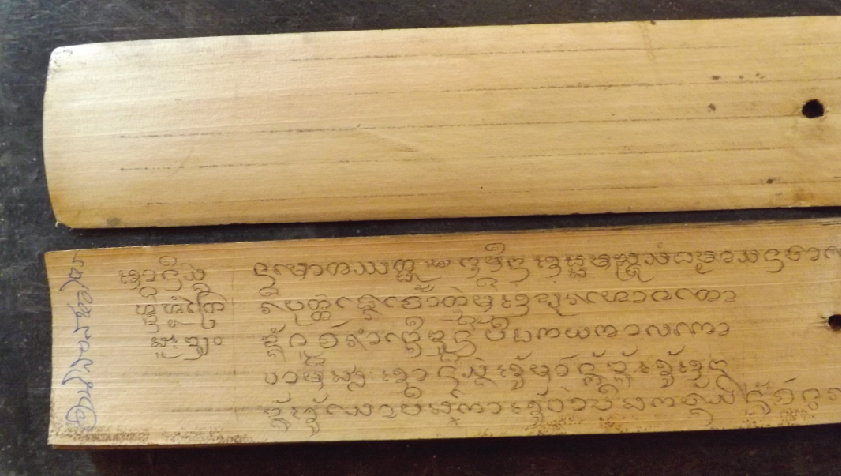
อานิสงส์หีดหอไตร ฉบับวัดพระหลวง อำเภอสูงเม่น จังหวัดแพร่
The Anisoong Heed Hor Trai of Wat Phra Luang, Amphoe Soong Men Prae province.
โดย ศิริศักดิ์ อภิศักดิ์มนตรี, ธนิกานต์ วรธรรมานนท์ / By Sirisak Apisakmontree, Tanikan Worathammanon
Damrong Journal, Vol 15, No.2, 2016
บทคัดย่อ:
อานิสงส์หีดหอไตร ฉบับวัดพระหลวง อำเภอสูงเม่น จังหวัดแพร่ เป็นคัมภีร์ใบลานซึ่งพบในปัจจุบันเพียงผูกเดียว ที่มีเนื้อหากล่าวถึงอานิสงส์การสร้างหอไตรโดยตรง จารโดยพระครูปัญญาภิชัย เจ้าอาวาสวัดพระหลวง อำเภอสูงเม่น จังหวัดแพร่ เมื่อวันที่ 18 กันยายน พ.ศ. 2467 ค้นพบใน พ.ศ. 2532 ปริวรรตเป็นอักษรไทย ภาษาไทยใน พ.ศ. 2557 จารเป็นความเรียงร้อยแก้ว ใช้อักษรธรรมล้านนาภาษาบาลีและภาษาไทยถิ่นเหนือ และมีการใช้อักษรไทย ภาษาไทยเฉพาะในตอนท้ายใบลานที่ระบุชื่อผู้จาร เนื้อหาเกี่ยวกับอานิสงส์การรักษาพระไตรปิฎก ทั้งการสร้างหอไตร หีบพระธรรม (ตู้พระธรรม) ธรรมาสน์ กากะเยีย (ที่วางคัมภีร์) ร้านธรรม สัตตภัณฑ์ ถวายไว้ในพระพุทธศาสนา ตลอดถึงการทำความสะอาดและบูชาพระธรรม ว่ามีอานิสงส์เทียบเท่ากับอานิสงส์ของพระโพธิสัตว์ขณะสร้างโพธิสมภารโดยพระสารีบุตรเป็นผู้ยกปัญหาเรื่องอานิสงส์นี้ถามพระพุทธเจ้า พระบรมศาสดาทรงตอบคำถามพร้อมแสดงปุพเพสันนิวาส คือความเป็นไปในชาติก่อน มาสนับสนุนผลบุญอันบังเกิดขึ้นจากการรักษาพระไตรปิฎก
ABSTRACT:
The Anisoong Heed Hor Trai or the result of merit of making hortrai to contain Buddhist holy scriptures of Wat Phra Luang, Amphor Soong Mayn, Prae province, is the only scripture that refers directly to the result of merit building Hortrai. It was written by Phrakru Panyapiwat, the abbot of Wat Phra Luang on 18 August 2467 B.E. and was found in 2532 B.E. and was translated in 2557 B.E. It was written in traditional prose using the Pali language in the Lanna alphabet from the beginning and is followed by commentary in the Lanna language. There were also Thai characters and the Thai language at the end of the scripture used to record the name of the writer and the merit of maintaining the Tripitaka by building a Hortrai, the scripture box and its altar, a Sattaphan (candle holder), a podium for a monk to chant the scripture (Dhammaassana) including the cleaning, maintaining and paying respect to these offerings. It is claimed that the result of merit is related to the Bodhisattava’s attempt to gain perfection. It dates back to the period of the Buddha when Saliputra asked the Buddha for the result of merit and he answered by recounting his previous lives to support the merit’s results.











